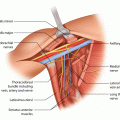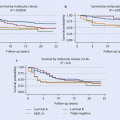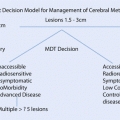Curative treatment
Intent to cure
Disease-modifying or disease-stabilizing treatment
Curative treatment no longer possible
Intent to prolong life and improve quality of life
Palliative care
Life prolonging or disease-modifying treatment no longer possible or is not in the best interests of the patient
Intent to improve quality of life and prevent and treat suffering
End-of-life care
Death is imminent in the near future
Intent to improve quality of life and prevent and treat suffering of dying patient and their families
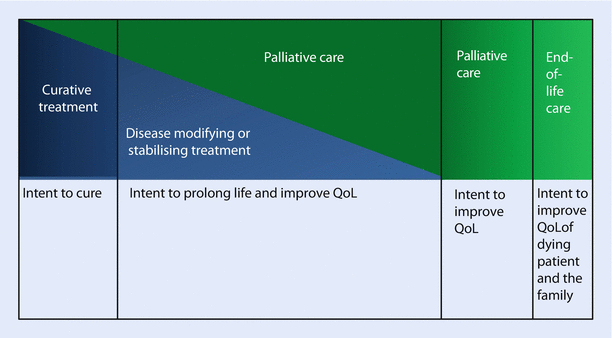
Fig. 56.1
The role of palliative care in cancer disease trajectory and treatment goals
56.3 Quality of Life
The primary goal of palliative care is to improve quality of life (QoL). However, health-related QoL is a complex issue. The WHO has defined health «as not merely the absence of disease or infirmity, but a state of complete physical, mental and social well-being». Quality of life, in a general sense, reflects the ways in which a person’s mental, social and physical well-being is evidenced in his or her everyday life. Patients with advanced breast cancer experience impaired quality of life [8–12]. Their Qol is especially poor in the field of physical, social and role functioning with impaired activities of daily living [8, 11, 12]. In the terminal phase of the disease, all dimensions of QoL are significantly impaired. Heavy symptom burden, especially activity-limited symptoms like pain and fatigue, and emotional distress have the greatest effects on quality of life of breast cancer patients with metastatic disease [8, 11, 12].
56.4 Relief of Symptom Burden
In advanced breast cancer, the symptom burden is a significant problem, with over one third of women reporting high levels of symptoms with pain, fatigue, insomnia and emotional distress being the leading problems [8, 9, 11, 12]. Healthcare professionals underestimate the symptom burden. In patients with advanced cancer, symptoms should be systematically assessed. The prevalence is highest if assessed by a questionnaire [13]: for example, the Edmonton Symptom Assessment Scale (ESAS) and EORTC-QLQ-C15-PAL questionnaires are widely used in this setting.
56.4.1 Pain
Pain is one of the most common symptoms reported by patients with advanced breast cancer. Bone metastases are the most common cause of pain in this patient group as 70% of breast cancer patients with advanced disease have bone metastases [14]. Approximately 65–75% of patients with bone secondaries suffer from bone pain, and more than half of the patients experience pain during movement, which impair activities in daily living [11, 15]. As metastatic bone destruction progresses, the increasing incidence of pathological fractures, spinal cord compression and malignant hypercalcaemia further increases suffering [14–17]. Pain arising from non-osseous metastases is also common and may include chest pain related to pleural or lung metastases, abdominal pain due to peritoneal carcinomatosis, pain due to liver capsule stretching, bowel dysfunction, headache caused by brain metastases or pain related to loco-regionally advanced breast cancer or skin metastases.
Analgesics
Analgesics are the corner stone of treatment of cancer pain. The WHO’s analgesic ladders have three levels (◘ Fig. 56.2). The first step is non-opioids (NSAIDs or paracetamol) for mild cancer related pain, but very soon opioids should be combined with non-opioids from ladder two (weak opioids like codeine or tramadol) or three (morphine-like strong opioids). Recently it has been recommended to start with low doses of strong opioids rather than with weak opioids as there is no advantage of weak opioids over a small dose of strong opioids. Opioids should be started with oral doses of long-acting sustained-release opioids (e.g. morphine 10–30 mg twice a day) using lower initial doses for elderly patients and in case of mild or moderate pain intensity. However, the dose should increase by 20–30% of the total daily dose every 1–3 days until the pain is adequately controlled. In addition to regular sustained-release opioid, patients need short-acting, normal-release formulation of opioids as rescue medication for breakthrough pain (i.e. transient increase in pain intensity over background pain). Constipation is a common adverse effect of opioids; thus preventive laxative use is recommended. In case of neuropathic pain, antidepressants (tricyclic antidepressants or serotonin/norepinephrine reuptake inhibitors) or anticonvulsants (gabapentin, pregabalin) are used as an adjuvant treatment in combination with opioids [18].
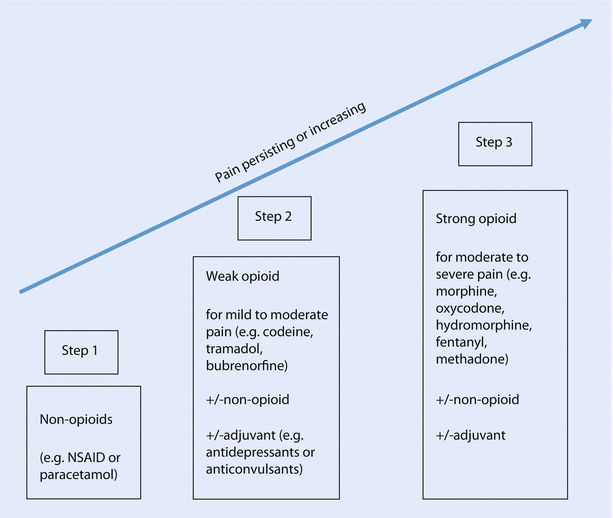

Fig. 56.2
WHO analgesic ladders
Radiotherapy
Radiotherapy is an effective treatment for cancer pain [19]. The onset of pain relief takes, however, from a few days to 4 weeks, so it rarely relieves pain quickly enough to avoid analgesic use. Approximately 70% of patients with painful bone metastases get significant pain relief, and a complete response is seen in one third, with the duration of pain relief from 3 to 6 months [19]. Single-fraction radiotherapy is as effective as a multifraction schedule. The time to treatment failure is shorter and retreatment twice as common (25%) after a single fraction compared with multiple fractions (10%) [19]. However, re-irradiation is effective [20]. Radionuclides like samarium-153 can be used in treatment of multiple painful sclerotic or mixed bone secondaries [21]. Radiotherapy is also effective for alleviation of pain arising from soft tissue tumours even though it is not as well documented as with bone pain.
Bisphosphonates
Bisphosphonates and the RANK-ligand inhibitor denosumab are potent inhibitors of osteolysis and bone resorption. They reduce the risk of developing skeletal events, i.e. new skeletal lesions, hypercalcaemia, pain and pathological fractures, and need for palliative radiotherapy or surgery. Bisphosphonates are the drugs of choice in the treatment of malignant hypercalcaemia. However, the pain-relieving effect of bisphosphonates and denosumab is relatively low, and they take several weeks to alleviate pain [22–24].
56.4.2 Dyspnoea
Lung metastases and pleural effusion cause dyspnoea, which is a very distressing symptom. In addition to dyspnoea, cough and chest discomfort are common concerns for these patients. In cases of bronchial obstruction or haemoptysis, palliative radiotherapy is effective [25]. Like in the treatment of bone metastases, a single fraction alleviates symptoms as effectively as multiple fraction radiotherapy. Treatment of symptomatic pleural effusion by thoracocentesis either with needle aspiration (approximately 1000 ml each time) or catheter drainage (using an indwelling catheter system) gives rapid relief of dyspnoea and discomfort. Pleurodesis, thoracoscopy and injecting talc into the pleural cavity (talc poudrage) appeared to be effective in preventing fluid build-up [26].
Opioids are effective in alleviation of dyspnoea [27, 28]. For opioid-naive patients, starting with 2.5–5 mg of oral short-acting morphine for rescue medication is recommended. If more than 2–3 daily doses are needed, a low dose of long-acting opioids for regular use can be considered especially in patients with persistent dyspnoea. Opioids are also effective in the treatment of a dry cough resulting from airway irritation.
56.4.3 Loco-Regional and Skin Problems
Loco-regionally advanced breast cancer with skin metastases may cause severe and distressing symptoms significantly impairing body image and social life. Lymphoedema of the upper extremity and chest wall, skin ulceration, bleeding, pruritus, exudate, infection, odour and pain may be extremely distressing. With limited disease surgery, radiotherapy or electrochemotherapy is effective especially with stable systemic disease, but with extensive progressive disease, they are seldom possible [29]. Palliative care with careful wound care is needed [30]. For bleeding either systemic or local tranexamic acid or an adrenalin dressing can be used. Single-fraction radiotherapy is also used to control bleeding. Systemic or topical antibiotics (e.g. metronidazole) in addition to odour-reducing (charcoal) dressings may be used to reduce unpleasant smells. Modified supportive bandaging, support and positioning a paralysed swollen arm, passive movements and gentle massage can comfort lymphoedema [31].
56.4.4 Symptoms Related to Brain Metastases
One third of women with metastatic breast cancer develop brain metastases during the course of their illness, less commonly leptomeningeal metastases [32]. The prognosis of brain metastases varies depending on the histopathology of the disease, the extent of and stability of extracranial disease and whether there are solitary or multiple brain metastases. In the palliative stage of the disease, the prognoses are usually poor. Palliative radiotherapy is recommended for patients with two or more months of life expectancy. In the end-of-life situation, the symptoms caused by brain metastases are alleviated by corticosteroids and convulsions by antiepileptics and benzodiazepines. Treatment options for cerebral metastases are dealt with more fully in ► Chap. 54.
56.4.5 Gastrointestinal Symptoms
Liver metastases, without symptoms of liver failure, are mainly asymptomatic. Pain may be caused by an enlarged liver causing stretching of the liver capsule. This may be alleviated by corticosteroids. Lobular carcinoma in particular may spread to the peritoneum and even invade the viscera (stomach, bowel, bladder) and cause bowel dysfunction and ascites formation. In addition, ascites may be related to liver metastases and liver failure. Abdominal paracentesis (3–6 l /day) affords rapid symptom relief. For patients with high volume and rapid formation of ascites, a tunnelled catheter can be used. However, tiredness, hyponatraemia and a progressive fall in plasma albumin have been reported after repeated paracentesis. The role of diuretics in the treatment of malignant ascites is controversial, and they are not routinely used. Bowel obstruction and paralysis (ileus) caused by peritoneal carcinomatosis are a severe and very distressing symptom. If not operable, the prognosis is poor, at only a few months. As the obstruction is rarely total, the symptoms can be alleviated with antisecretory agents (somatostatin analogues such as octreotide, anticholinergic agents like glycopyrrolate and butylbromide), opioids and antiemetics via subcutaneous infusions to reduce bowel secretion, pain and nausea/vomiting [33]. After vomiting has been reduced, the nasogastric tube can be removed, and patient can take some food and liquids orally with small portions, which significantly improves the quality of life of dying patients and makes care at home possible. In a case of severe vomiting, percutaneous gastrostomy might be needed to alleviate vomiting.
56.5 Psychosocial Support
56.5.1 Symptoms Impairing Emotional Well-Being
Fatigue, insomnia, depression and anxiety impact negatively on patients’ daily lives and emotional well-being. Fatigue is the most common symptom of advanced cancer, reported by three quarters of patients and subjectively is the most disturbing [8, 11–13, 34]. It is an activity-limiting symptom that significantly affects functional capacity and interferes with role functioning and ability to conduct daily activities [34, 35]. It may begin with a simple decrease in physical activity, but can cause feelings of loss of control, loneliness and isolation [36]. Significant fatigue is associated with higher level of depression, pain and sleep disturbance forming a symptom cluster negatively affecting to QoL [35, 37]. The prevalence of depression and anxiety among breast cancer patients with metastatic disease is higher (up to 40%) than the prevalence within patients with early-stage disease (26%) [11, 34, 38, 39]. Insomnia is also a common problem among cancer patients. 40–60% of patients with advanced breast cancer report sleep disturbances, in one third of them moderate or severe [8, 11, 12].
56.5.2 Psychosocial Support
There is an increased need for psychosocial support of breast cancer patients throughout the disease trajectory. The diagnosis of metastatic disease with limited life expectancy represents a time of shock, crisis and anxiety for patients and their families. There is an ongoing need for repeated, truthful but sensitive discussion and information provision about their disease. Emotional distress should be systematically assessed. Visual analogue tools such as the distress thermometer can be used to screen patients and identify those with the utmost need for psychosocial counselling and support. A scale of four or more out of ten compares well with other multiple item scales. Accompanying problem lists help to identify distress from emotional, spiritual or religious concerns, social or family issues or physical problems. Especially vulnerable are young women and women with small children or adolescents. Psychosocial support delivered by professionals and peer support from patient groups may help women discuss their experiences and improve their emotional well-being particularly in those women who are more distressed [40]. Also families are profoundly influenced by incurable malignant disease of a family member. Terminal illness alters daily life, roles and relationships within the family. Additional worries arise regarding how the family will cope after the death of the patient [41]. Thus, psychosocial support may also be helpful for family members and caregivers.
Stay updated, free articles. Join our Telegram channel

Full access? Get Clinical Tree



